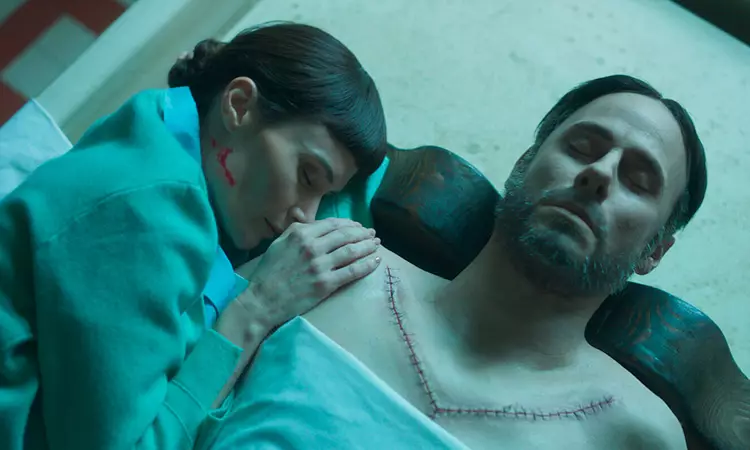“Broken Bird” takes viewers on a harrowing journey through the labyrinth of grief and obsession, framed around the peculiar life of Sybil Chamberlain, portrayed with enchantingly eerie finesse by Rebecca Calder. The film opens dramatically with the image of a dead bird, setting the tone for a narrative steeped in loss. As Sybil, donned in surgical scrubs, performs amateur taxidermy on her find, the film asks unflinching questions about life, death, and the thin veneer of sanity that holds people together in the face of trauma. With this visceral scene, the film deftly intertwines the grotesque with the poetic, pressing the audience to reflect on the nature of mourning and the compulsions that arise from unresolved grief.
As the story unfolds, we delve deeper into Sybil’s troubled psyche. Her background—a harrowing car accident in her childhood that robbed her of her family—serves as the emotional bedrock of her character. This traumatic event has left her psychologically fractured, and as an adult, she seeks solace among the dead in a macabre blend of taxidermy and mortuary work. Her dreamlike encounters with cadavers reflect a yearning for connection that is both haunting and relatable, revealing how grief can metamorphose into an obsession that distorts reality. Sybil’s conversations with the deceased further illustrate her struggle against loneliness in a world that feels alien, where the line between the living and the dead becomes increasingly blurred.
The interconnected narrative weaves between Sybil and other figures steeped in their own grief—most notably Emma, a police detective played by Sacharissa Claxton. Emma’s narrative is tragic in its own right, marked by the recent death of her young son and the ensuing chaos of his body’s mysterious disappearance. Her descent into alcoholism and hallucinations illustrates a profound inability to accept her loss, mirroring Sybil’s struggles. This parallel thread not only enriches the storytelling but also broadens the film’s exploration of how different characters cope with bereavement, inviting audiences to ponder the multifaceted nature of loss and sorrow.
Sybil’s infatuation with Mark, a museum worker played by Jay Taylor, introduces an intriguing layer of complexity to her character. Mark, already intertwined with another woman, becomes an unattainable figure of desire and longing. Here, the film critiques the dangerous allure of obsession; Sybil’s fixation on Mark is a desperate attempt to reclaim a semblance of normalcy and love in a life saturated with death. This unrequited yearning underscores the human desire to connect, even when such connections are fraught with pathology.
Joanne Mitchell’s directorial debut arises from a blend of artful cinematography and an enthralling screenplay that adapts her earlier short film “Sybil.” The film navigates the realms of psychodrama while teasing the audience with hints of horror. The viewer is invited to witness a mosaic of sorrow and madness, with the stories of Sybil and Emma destined to converge in unexpected ways. While the narrative glimmers with impending calamity, it refrains from delivering a linear plot twist, instead fostering an emotional resonance that lingers long after the final credits.
As the film draws toward a climax, it echoes sentiments comparable to those found in the works of filmmakers like Lucky McKee and Lynne Stopkewich, where life, love, and loss intertwine in haunting harmony. The ending is imbued with a tragic beauty, meticulously crafted to evoke both revulsion and sympathy. Ultimately, “Broken Bird” transcends the confines of conventional storytelling to emerge as a poignant examination of humanity’s darkest corners, where grief is not merely a backdrop but an intrinsic part of the characters’ very beings. The film serves as a stark reminder that while the fragility of life may leave us shattered, it can also yield profoundly poetic reflections on the interplay of love and mortality.

